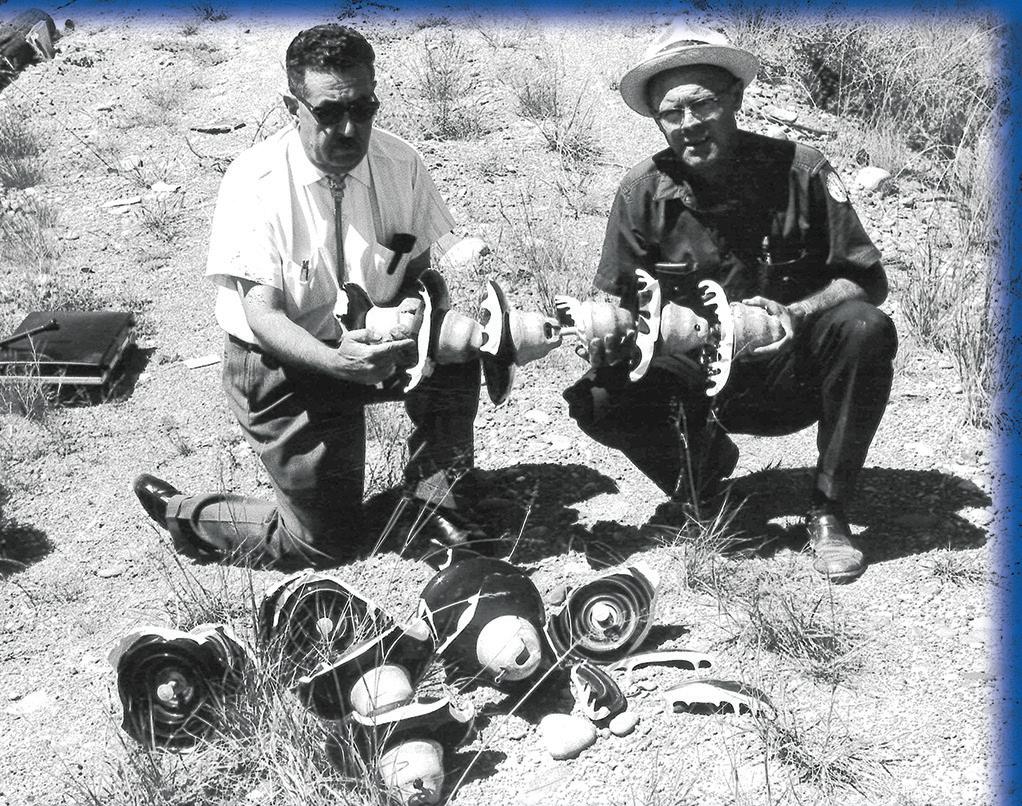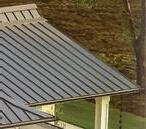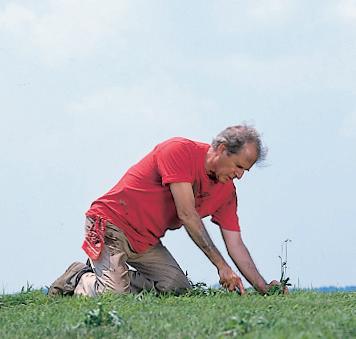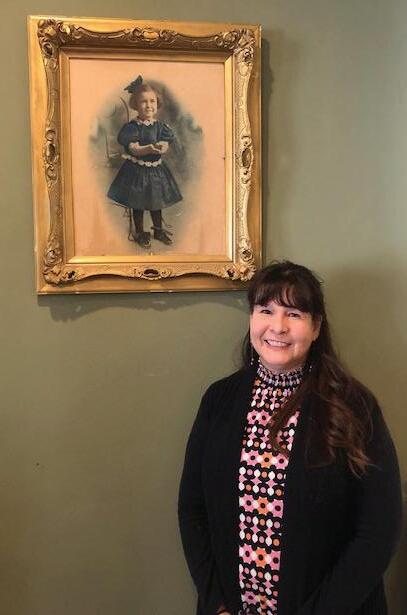COOPERATIVE
APRIL 2023




APRIL 2023










JMEC people talk about what they think is the single most important advancement in electric service since the co-op’s founding. What do you think? Page 5





 Jemez Mountains Electric Cooperative, Inc.
Photo at right, JMEC GM and CEO Michael Hastings and Assist. GM and professional engineer Dennis Astley recreate the scene captured in the photo at left from the cooperative’s early days. Fred Abouselman, left, who was a founder as well as GM and board secretary, with Woody Wood, manager of operations.
JEMEZ MOUNTAINS ELECTRIC
Jemez Mountains Electric Cooperative, Inc.
Photo at right, JMEC GM and CEO Michael Hastings and Assist. GM and professional engineer Dennis Astley recreate the scene captured in the photo at left from the cooperative’s early days. Fred Abouselman, left, who was a founder as well as GM and board secretary, with Woody Wood, manager of operations.
JEMEZ MOUNTAINS ELECTRIC

April 1, 2023 • Vol. 75, No. 4
USPS 175-880 • ISSN 0046-1946
enchantment (ISSN -) is published monthly by the New Mexico Rural Electric Cooperative Association, Don Gaspar Ave., Santa Fe, NM . enchantment provides reliable, helpful information on rural living and energy use to electric cooperative members and customers.

More than , families and businesses receive enchantment magazine as electric cooperative members. Nonmember subscriptions are available at $ a year or $ for two years, payable to NMRECA. Allow four to eight weeks for first delivery.
PERIODICAL POSTAGE paid at Santa Fe, NM and additional mailing offices.
CHANGE OF ADDRESS: Postmaster, please send address changes to Don Gaspar Ave., Santa Fe, NM -. Readers who receive the publication through their electric cooperative membership should report address changes to their local electric cooperative office.




THE NEW MEXICO RURAL ELECTRIC COOPERATIVE ASSOCIATION provides legislative and educational services to the cooperatives that are members of the association and deliver electric power to New Mexico’s rural areas and small communities. The mission of the New Mexico Rural Electric Cooperative Association is to strengthen, support, unify and represent cooperative member interests at the local, state and national levels. Each cooperative has a representative on the association’s board of directors, which controls the editorial content and advertising policy of enchantment through its Publications Committee.
OFFICERS OF THE BOARD OF DIRECTORS
Charles Pinson, president, Central Valley Electric Co-op, Artesia; Tim Morrow, vice president, Springer Electric Coop, Springer; Duane Frost, secretary-treasurer, Central NM Electric Co-op, Mountainair.
BOARD OF DIRECTORS
Chris Martinez, Columbus Electric Co-op, Deming; Keith Gottlieb, Continental Divide Electric Co-op, Grants; Antonio Sanchez, Farmers’ Electric Co-op, Clovis; Manny Bustos, Jemez Mountains Electric, Española; Robert Caudle, Lea County Electric Co-op, Lovington; James Ortiz, Mora-San Miguel Electric Cooperative, Mora; Thomas G. Rivas, Northern Río Arriba Electric Co-op, Chama; Preston Stone, Otero County Electric Co-op, Cloudcroft; Gene Creighton, Roosevelt County Electric Co-op, Portales; George Biel, Sierra Electric Co-op, Elephant Butte; Donald L. Wolberg, Socorro Electric Co-op, Socorro; Joe Reeser, Southwestern Electric Coop, Clayton; Wayne Connell, Tri-State G&T Association, Westminster, Colorado; Charles G. Wagner, Western Farmers Electric Co-op, Anadarko, Oklahoma.

Don Gaspar Ave. Phone: -- Santa Fe, NM Fax: -- nmelectric.coop enchantment.coop
Charise M. Swanson, CEO, cswanson@nmelectric.coop Tom Condit, director of communications, tcondit@nmelectric.coop
DISPLAY ADVERTISING: Rates available upon request. Co-op members and New Mexico display advertisers, email Shaylyn at enchantmentads@ nmelectric.coop or call --. National representative: American MainStreet Publications, --.
Advertisements in enchantment are paid solicitations and are not endorsed by the publisher or the electric cooperatives that are members of the New Mexico Rural Electric Cooperative Association. PRODUCT SATISFACTION AND DELIVERY RESPONSIBILITY LIE SOLELY WITH THE ADVERTISER.
© New Mexico Rural Electric Cooperative Association Inc., in partnership with Pioneer Utility Resources. Reproduction prohibited without written permission of the publisher.
Your Electric Co-op
Hale to the Stars
Book Chat
Reaching to Safety
Supporting their Community
Electricity
On the Menu
The Market Place
Hydro History

Enchanted Journeys
Youth Art
Take a photo of you holding YOUR MAGAZINE AND WIN!

Congratulations to monthly photo winner Bobby Marchbanks, a Farmers’ Electric member, with his January enchantment magazine!

Alvin read the magazine at church.
Bobby Marchbanks wins $20!
Take a photo of yourself or someone else with the magazine and email it with a few words about the photo. Include your name, mailing address and co-op name.
One lucky member will win $20. Submitting your photo(s) gives us permission to publish or post the photo(s) in enchantment, on Facebook and in other media outlets.
Email tcondit@nmelectric.coop

Jemez Mountains Electric Cooperative, Inc., came into being 75 years ago because investorowned utility, Public Service Company of New Mexico (PNM), would not extend its service into our communities at that time.


CEO and General Manager
Michael W. Hastings
Address
19365 S.R. 84/285
Hernandez, New Mexico 87537
Telephone: 505-753-2105
Toll-Free: 888-755-2105
Emergency Outages: 877-753-0095

Website: www.jemezcoop.org
Office Hours
8:00 a.m. to 4:30 p.m. (M-F)
Board of Trustees
President, Dennis Trujillo
District 1 - Jemez Springs, Jemez
Pueblo, Zia Pueblo, Surrounding areas
Vice President, Manuel Bustos
District 5 - La Mesilla, San Pedro & north up to Alcalde
Secretary, John Ramon Vigil
District 4 - Santa Clara Pueblo north to Medanales including Lyden & La Canova west of the Rio Grande River
Treasurer, Dolores G. McCoy
District 2 - Cuba, surrounding areas in Sandoval, McKinley & San Juan Counties
Asst. Secretary/Treasurer
Stanley Crawford, District 5 - Velarde, Dixon & other areas located in Rio Arriba County east of the Rio Grande River
Dennis Gallegos, District 3 - Abiquiu & the Cañones, Coyote, Gallina, Llaves & Lindrith areas

Lucas Cordova, Jr., District 4 - Chili, Chamita & other areas from Santa Clara Pueblo north to Medanales including Lyden & La Canova west of the Rio Grande River

Elias Coriz, District 5 - Chimayo & all other areas in Rio Arriba County east of the Rio Grande River
Marcelina Martinez, District 6 - Santa Cruz & surrounding areas located in Santa Fe County
Bruce Duran, District 6 - Nambe, Pojoaque, surrounding areas located in Santa Fe County
Marissa Maestas-Muller, Trustee-At-Large - represents the entire cooperative area at large
“Then, in 1962, PNM tried to convince member-owners to sell the system,” said John Ramon Vigil, JMEC trustee. “But they only wanted the Española area and had no regard for the rural areas which were sparsely populated. The members overwhelmingly rejected that proposal.”
Investor-owned, for-pro t electric utilities have historically refused to extend their service to more rural, remote and impoverished areas because doing so costs them too much money. This table is telling:
Source: NRECA: Quadrennial Energy Review, https://bit.ly/3ExXDie; Business & Technology Advisory, https://bit.ly/3KDlNf3









Practical electrical systems were introduced in the U.S., in the 1880s and by the 1920s, most cities and towns in America received electricity from either investor-owned or municipal utility companies. By 1932, only 10 percent of rural America was electri ed and about half of those people had to buy their own country-home power plants.
Source: National Museum of American History, https://s.si.edu/3m0Lufb
Now, about 99 percent of the nation’s farms have electric service but the work is not done. JMEC is grateful to our members who have stepped up and supported the cooperative throughout our history and to our employees whose hard work and dedication have served as the sturdy backbone of the organization. Thank you.
Over the last 75 years, what would you say is the single most important advancement in electric service?
“Reliability,” said Dennis Trujillo, board of trustees president for Jemez Mountains Electric Cooperative, Inc. This idea was seconded by Lenny Ortiz, JMEC’s vegetation management coordinator. “My answer to that question is the reliability of power to consumers and, the new technology that we use now compared to then.”
Karen Wisdom, JMEC senior manager of contract administration and compliance, was feeling it for modern technology, too.
“Computers have given us the ability for advanced communications with our members,” she said.


“We are able to more quickly narrow down outage issues and inform members of the cause and possible duration.”






Wisdom’s dad, Jeffie Lee, was a longtime staff engineer for JMEC and that made outage management a kind of family affair back in the day. “I was answering the outage line when I was 10 years old,” Wisdom said. “We would write down the outage areas, who was calling and go out to dad’s company vehicle to use the two-way radio to call the linemen. We had to use dad’s knowledge of the system to pinpoint the outages. Now we do all that with time-saving technology.” Story continues on page 28.


A lot has changed since the introduction of the telegraph in 1840s ushered in the line worker profession. These workers don’t have to shinny up a pole and cling to it with just their legs anymore or dig and set poles by hand. While still difficult and dangerous, the trade’s mechanical advancements, as well as the onset of safety rules and training, have made the work less hazardous.
Still, it remains an incredible effort to restore power when fixing the problem is widespread, requires miles of driving on unimproved or nonexistent roads, the weather is treacherous or unseen animal behavior obscures the cause. The regular and routine work of maintaining the system, installing new wires and poles, updating equipment and the like is hard enough.
The establishment of apprenticeship programs has gone a long way to leverage the line workers’ experience, develop professional standards and carry best practices forward from one generation to the next. Jemez Mountains Electric Cooperative’s own apprenticeship program takes about four years of full-time instruction, training and on-the-job learning to develop the skills necessary to work with electricity, circuits, power lines and other electronic equipment. At completion, graduates have earned the qualification to work as a journeyman line worker.
There are a lot of JMEC workers who are essential to making sure when you flip a switch at your house or plug in an appliance, a light comes on and the appliance operates. In April, however, we celebrate our line workers, the members of our team who look after the more than 4,000 miles of transmission and distribution lines for the largest electric cooperative in New Mexico. Thank you!

Our solar system’s two inner worlds put on a good show in our western skies during this month’s evening hours. The primary showpiece is Venus, which shines brilliantly in our west for up to two hours after the end of dusk. Closer to the horizon—and quite a bit dimmer but still quite bright and conspicuous—is Mercury, which is at its highest a few days before midmonth. Within a few days, however, Mercury starts a rapid descent toward the horizon and is lost in twilight by the last few days of April.
Also visible in our evening sky this month is the red planet, Mars, which continues to fade as it keeps pulling away from Earth following their relatively close approach to each other late last year. Mars is high in the western sky as darkness falls and sets about two hours after midnight. Meanwhile, over in our morning sky, Saturn rises up to an hour before dawn and gradually climbs higher into our eastern sky during the coming months.
April’s one semi-decent meteor shower is the Lyrid shower, which this year peaks the morning of Sunday, April 23. Normally,
Lyrids only produce about 15 to 20 meteors an hour, but on rare occasions—most recently 41 years ago—have produced much stronger displays.
A rare hybrid solar eclipse takes place Thursday, April 20. During this event, the moon is at such a distance from Earth that it is in total eclipse near the center of the path and annular (not large enough to cover the sun completely and thus leaving a thin ring, or annulus, around it) toward either end of the path. This month’s eclipse takes place mainly over open waters of the eastern Indian and southern Pacific oceans, with the only landfall taking place over Australia’s Northwest Cape and parts of the islands of Timor and New Guinea in Indonesia. These locations will experience slightly more than one minute of totality.
While New Mexico misses out on this eclipse, we get both of the next two solar eclipses. An annular eclipse October 14 passes directly across New Mexico from northwest to southeast, and a total eclipse crosses east-central Texas on April 8, 2024. New Mexico will see a relatively deep partial eclipse from that event.



















































Raised on a ranch, Lucas Cordova, Jr., was not one for idleness. Though a rancher by trade, helping out an uncle more than 30 years ago who was an electrician sparked an interest in that profession, which led to his work as an inside wireman in Albuquerque.

“I lived in Española and heard there was an opening at Jemez Mountains Electric Cooperative so I got started with the co-op in 1989,” Cordova said. He worked a few months on the tree trimming crew before joining the first class JMEC hosted of the four-year journeyman lineman apprenticeship.

There was book learning and monthly tests but Cordova said the on-the-job experience was the best way to learn. “We had some really good mentors,” he added. “The linemen all were very helpful and none of us got hurt.”
Once he became a journeyman lineman, Cordova got a position as a working foreman, running a maintenance crew. “Every day was different, which is one of the things I really liked about the job,” he said. “We were the first crew to clear lines if there was an interruption of service and otherwise stayed busy completing work orders or maintaining the line.”
Ever the hardworking entrepreneur, Cordova purchased a bucket truck and a crane truck during this time and started doing tree trimming on the side. Naming his business Aspen Tree and Crain Service LLC, eventually the side business got so busy it became

his main business when he left JMEC’s employ in 1999. He was still ranching, working with his dad, the senior Lucas Cordova, though his dad is less involved now at age 84.



He was first elected to the JMEC board of trustees in 2007. “My great uncle was a trustee as was my dad’s brother so I guess it’s in the family genes,” Cordova said. “I saw some of the equipment the linemen were still using and at the time no one else on the board had done line work so, I thought I could make a difference by bringing a different perspective.”


Sometime later Cordova said the father of a lineman came on the board and together they helped educate the other trustees about the need to bring these workers’ equipment to current, more safe standards. “We did the work that earned the support of a majority to start an upgrade and take care of our people,” he said. “It made a difference.”
That’s how he sees the role of the JMEC trustees – making a positive difference for others, both the employees and members. “We have a good board of trustees today who work well together and with our CEO and general manager,” Cordova added. “The members are our owners and like a former trustee said, we get our report card every four years as to whether we’re doing a good job or not. All we need to focus on is doing a good job for them.”
 Jemez Mountains Electric Cooperative, Inc.
From Employee to Trustee: Lucas Cordova, Jr.
Jemez Mountains Electric Cooperative, Inc.
From Employee to Trustee: Lucas Cordova, Jr.
1 – CUTS WATER BILLS AND MOWING BY AS MUCH AS 2/3













2 – NO GARDENING EXPERIENCE NEEDED – NO DIGGING UP OLD GRASS



3 – GROWS IN POOR, ROCKY, SANDY OR CLAY SOIL – IT DOESN’T MATTER


A fabulous entry point for building an understanding and intimacy with the guiding principles of Carl Jung, the famed Swiss psychiatrist, psychoanalyst and architect of analytical psychology. References to Jung’s exploration of archetypes, shadow, individuation and collective unconsciousness continue to saturate contemporary vocabulary six decades after his death. “Man and His Symbols, Jung’s final work, offers substantial reason.
 By Carl G. Jung Bantam
By Carl G. Jung Bantam
Available at Amazon.com
Sabrina & Corina: Stories
From an author raised in New Mexico, this is an award-winning collection of short stories centering on the lives of Latina women and their communities. It is a National Book Award finalist and winner of an American Book Award. Kali is an emerging and exciting author shining light and piercing dimension on Southwestern life.
 By Kali Fajardo-Anstine Random House Publishing Group Available at Amazon.com
By Kali Fajardo-Anstine Random House Publishing Group Available at Amazon.com

Pueblo history is detailed as seen through a series of famed etchings by Floyd Solomon of Laguna Pueblo. Floyd was an artist who dedicated much of his massive talent to giving voice to a native perspective on history. This collection assembled by Joyce M. Szabo—the regents’ professor of art history emerita at the University of New Mexico and specialist in Native American art and museum studies—showcases Solomon’s stunning etchings while offering a broader view of his great life effort to pass along generational perspective, with deep attention given especially to the arrival of the Spanish in the late 16th century.
By Joyce M. Szabo University of New Mexico Press unmpress.comAvailable at Amazon.com
All book reviews are at the sole discretion of the book reviewer. Submitting a book is not a guarantee it will be reviewed. Send your book to:

ATTN: Book Chat
614 Don Gaspar Ave. Santa Fe, NM 87505
ADOBE STOCK PHOTO BY MOTIZOVA













Everything

The answer: Although tremendous strides have been made in Hearing Aid Technology, those cost reductions have not been passed on to you. Until now...











MDHearing ™ uses the same kind of technology incorporated into hearing aids that cost thousands more at a small fraction of the price.








Our




























































































































































































































Like millions of older Americans, I struggle with mobility. For years, I watched my quality of life slip away, as I was forced to stay home while friends and family took part in activities I’d once enjoyed. I thought I’d made some progress when I got a mobility scooter, but then I realized how hard it was to transport. Taking it apart and putting it back together was like doing a jigsaw puzzle. Once I had it disassembled, I had to try to put all of the pieces in the trunk of a car, go to wherever I was going, and repeat the process in reverse. Travel scooters were easier to transport, but they were uncomfortable and scary to drive, I always felt like I was ready to tip over. Then I found the So LiteTM Scooter. Now there’s nothing that can hold me back.
Years of work by innovative engineers have resulted in a scooter that’s designed with seniors in mind. They created Electronic Stability Control (ESC) that makes it virtually impossible to tip over. If you try to turn too quickly, the scooter automatically slows down to prevent it from tipping over. The battery provides powerful energy at a fraction of the weight of most batteries. With its rugged yet lightweight aluminum frame, the So LiteTM Scooter is the most portable scooter ever—but it can hold up to 275 pounds—yet weighs only 40.8 pounds without the battery!
•
•



What’s more, it easily folds up for storage in a car seat, trunk or even on an airplane. It folds in seconds without tools and is safe and reliable. Best of all, it’s designed with your safety in mind, from the newest technology and superior craftsmanship. Why spend another day letting your lack of mobility ruin your quality of life? Call now and find out how you can get a So LiteTM Scooter of your very own.



Please mention code 117877 when ordering.





In our modern world, young people with advanced technology skills have bright futures. The challenge is making sure students from every background can access that future. Underrepresented students have unique struggles, but peer support and professional guidance can help them succeed. The American Indian Science and Engineering Society—known as AISES—is a professional society focused on increasing the representation of Indigenous people of North America and the Pacific Islands in STEM studies and careers.
STEM is an acronym for science, technology, engineering and mathematics. It is sometimes called STEAM, with an added A for art. Employees with these skills are in high demand but often in short supply, and job opportunities are expected to keep growing. Proponents say these programs teach creativity, critical thinking and problem-solving skills that can be
valuable in many career fields and other aspects of life.
According to AISES, students do best when started on the STEM pathway early. Parents and educators need STEM-related information and resources to support learning. AISES helps Indigenous students by offering programs and services for precollege, college and graduate students. The organization provides scholarships, professional mentorships, peer support and the Winds of Change magazine, which shares profiles and tips.
Byron Whitehorse, a staff adviser to the AISES chapter at the New Mexico Institute of Mining and Technology, speaks highly of the program.
“AISES has provided multiple opportunities for students to network, gain internship experience, provide scholarships and, most importantly, provide NMT Native students with a club with other students who share the same experiences and struggles,” he says.
New Mexico is part of AISES Region 3, which covers the American Southwest. The New Mexico Tech chapter has grown since the rise of the pandemic, providing connection in a time of isolation.
Students from the Tech AISES chapter hosted the university’s first-ever Native American Heritage Day last November.

“Indigenous students who attend New Mexico Tech come from areas where the communities are mostly Indigenous,” Byron says. “So, customs and traditions are vastly different when these students leave these areas.”
AISES helps students meet others who understand that background. Jonnie Alisha Woody, vice president of the New Mexico Tech chapter, is from Shiprock in the Navajo Nation.
“AISES is such an uplifting and exciting family to be a part of,” she says. “AISES has provided me areas where I can network and gain mentors and learn about opportunities.”
Jonnie is a senior majoring in biomedical sciences, planning to become a pediatric oncologist. She has been involved with AISES since eighth grade, when her middle school teacher had her work on electric cars.
“Being an Indigenous student can be hard,” says Jonnie, who is of the Salt people and born for the Bitter Water people. “I feel ashamed that I don’t learn my culture as much as my education. I feel overly privileged for the life I live off the reservation and the opportunities I receive. And I also feel sometimes I am just not smart enough or talented enough to be here. Being away from my culture and my family is hard, especially now that generational tides are turning, and my elders are starting to pass on to the next life.”
Participating in AISES helps keep her connected to her culture as well as her education and professional goals. Jonnie was one of eight AISES students from the Tech chapter who attended the 2022 AISES National Conference in California.
“You go and there are professionals,
elders, and peers that encourage you,” she says. “The wisdom and guidance I once received, I now have to live on my own and learn to help the next generation. AISES is a place where many indigenous professionals and students understand or have insight. You get to see their wins and successes and it makes me feel more than capable to be a pediatric oncologist someday.”
While at the national conference, AISES students from Tech successfully competed to host the 2023 AISES Region 3 conference in Socorro. Navajo Technical University in Crownpoint is partnering on this conference, which was held March 24 to 26. By bringing the AISES Region 3 conference to Socorro, the Tech chapter hopes to inspire more Indigenous young people to attend the school.

“New Mexico Tech is surrounded by many proud tribes, like Isleta Pueblo, Alamo Navajo, and Mescalero Apache,” Jonnie says. “I hope this brings these students to Tech and encourages them to pursue a degree. I hope this event erases any hesitation any student might have about their ability to be a STEM professional.”
They only had a few months to plan
the conference. The AISES student club has the support of staff and faculty at New Mexico Tech and Navajo Technical University, but the students did much of the work.

“Our biggest challenge is balancing our time for our club growth, our own educational goals, our own financial goals and our personal priorities, such as our families,” Jonnie says. “We are securing speaker positions, co-organizing events with Women’s History Month and working to find different ways to fundraise. The event is coming together.”
The New Mexico students looked forward to hosting an inspiring conference for students from Arizona, Utah, and Colorado as well as throughout New Mexico. Attendees could learn about STEM opportunities and find support for their educational and career growth. Jonnie’s goal was for attendees to leave feeling excited about where they can go.
While an annual conference brings students and experts from the region together, the campus groups help maintain those bonds throughout the year. Indigenous students aren’t the only ones who face obstacles in education, so
the AISES chapter partners with different groups in underserved communities. Together these groups hope to increase diversity in the STEM field while allowing students to find career success and fulfillment.
“We have our own close-knit AISES community on campus,” Jonnie says. “We help one another, and we work towards our goals together.”
Close your eyes and let your imagination take over for a moment. The room is dark, quiet and peaceful. There’s no hum of a freezer, no background music, no shouts from a noisy gaming system. No text alerts interrupt your thoughts.
Open your eyes, but imagine the room is still dark. You have to navigate with a flashlight or candle. Hopefully, you know where to find the spare batteries and matches. Your ice cream has melted, and you have no access to social media.
While the dark scenario has its merits, the truth is, most of us dread the version lacking electricity. While we could live without it, we don’t want to.
You don’t need to know how electricity works to enjoy it, but understanding some basics can affect your consumption.
Electricity is the flow of electrical power or charge. It is considered a secondary energy source because it comes from the conversion of other primary sources of energy.
These primary sources include coal, natural gas, nuclear, hydroelectric and oil. Some energy sources—such as sunlight, wind and water—are renewable and can be replenished. Others—such as oil, natural gas and coal—are nonrenewable and cannot be replenished.
In simplest terms, the power you receive originates at a generating plant. Transformers at the plant increase the voltage up to 345,000 volts. High-voltage transmission lines carry the electric energy over long distances.
After substation transformers reduce the
electricity to 7,200 to 14,000 volts, distribution lines carry it to transformers that reduce power levels to 120/240 or 120/208 volts for use in schools, farms, homes and small businesses.
Electricity can be measured three ways.
• Volts (V): A unit of electric force that measures the pressure of electricity. House electricity is 120 volts. Flashlight batteries are 1.5 volts. Car batteries are 12 volts.
• Watts (W): The measure of power an electric current can generate. Most appliances are labeled with the wattages they use. Many have a range of settings, so the actual power consumed depends on the setting used. For example, a fan uses more power at a high speed than it does at a low speed. A kilowatt (kW)
Calculate Energy Consumption:
Power x Time = Energy
Example: Using a 100-watt bulb for 10 hours equals 1 kWh. (100 watts x 10 hours = 1,000 watt-hours or 1 kilowatthour.)
Calculate Energy Costs:
Power (kW) x Time (hours of operation) x Price ($/kWh) = Cost of operation.
Follow these five easy steps to determine how much it may cost to run a specific appliance. You are billed per kWh, or for how much electricity you use in one hour. Examples are based on an average cost of $0.144 per kWh.
1) Obtain the wattage (watts) from the appliance nameplate.
Example: A space heater with a nameplate of 1,500 watts. Note: If listed as kW, skip to step 3. If amps are specified, multiply amps x voltage to obtain watts.
2) Divide the number of watts by 1,000 to get kW.
Example: 1,500 W ÷ 1,000 = 1.5 kW.
is equivalent to 1,000 watts. A kilowatthour (kWh) is a measurement of energy consumption. It is the amount of power used over time and the basis for how electric bills are calculated.
• Amperes (amp): The measure of how much electricity moves through a conductor. Amperes equal watts divided by volts. A typical household electrical outlet is 15 amps.
See above to learn how to calculate your energy use and projected costs.
According to the Energy Information Agency, the typical U.S. household uses more air conditioning, appliances and consumer electronics than ever before. The average home contains 10 or more internet-connected devices.
There are many small ways to save energy, such as turning off the lights, ceiling fan or TV when you leave the room. A more encompassing way to save energy is to reduce phantom power.
Even when turned off, most electronics consume a small amount of electricity if they are still plugged in. Chargers for
3) To find out how many kWh the appliance uses, multiply the kW times the number of hours* the appliance runs each day.
Example: The heater runs for 10 hours per day = 1.5 kW x 10 hours = 15 kWh per day.
*If the appliance operates for less than one full hour, divide the number of minutes by 60. Example: a hair dryer is used five minutes daily, or 5 ÷ 60 = 0.083 hours per day. A 1,250watt hair dryer = 1.25kW x 0.083 hours per day = 0.1 kWh per day.
4) To calculate the daily operating cost, multiply the kWh of the appliance by the average cost per kWh.
Example: Space heater daily cost = 15 kWh x $0.144 = $2.16 per day.
5) To calculate the monthly operating cost, multiply the daily cost by the number of days the appliance is used during the month.
Example: If you run the 1,500-watt space heater 10 hours a day, 30 days a month = 15 kWh x $0.144 x 30 = $64.80.
mobile devices consume electricity if they are plugged in, even when not actively charging the device.
This wasted energy, called phantom load, accounts for as much as 10% of a home’s total electric use.
Save money by unplugging your electronics when you are done using them. Using a power strip can help you unplug multiple devices at once. Smart power strips automatically cut off phantom loads.
Another way to combat phantom power is with the use of smart plugs. Smart plugs are inexpensive and can be used to control items through a smartphone app.
With smart plugs, you can manage lighting, home office equipment and video game consoles.
The combined use of large appliances such as dishwashers, dryers and washing machines account for the largest percentage of electricity use in the average U.S. home. Small steps will help save energy when using these appliances.
Only run full loads in the dishwasher, and thoroughly scrape food from dishes
before loading. Dry towels and heavier cottons separate from lighter-weight clothing, and clean the lint screen after every use. Wash clothing in cold water to save energy used to heat water.
You can’t talk about saving energy without considering lightbulbs.
Switching from incandescent bulbs to LED smart bulbs can help save energy and money over the long run, despite a higher initial cost. LEDs come in a variety of colors and brightness levels, lasting 15 to 25 times longer than incandescent bulbs.
As we switch to more-efficient bulbs, we must change how we shop for them.
In the past, we selected lightbulbs based on wattage. But wattage indicates how much power is used rather than the bulb’s brightness.
The term to learn is lumens. Lumens measure the amount of light produced by the bulb. Use lumens to compare the brightness of any bulb.
Once you know the brightness you need, you can shop wisely and get the most for your money.




“The renown of Italy’s jewelry, with its sensual beauty and extraordinary craftsmanship, is founded on the goldsmithing skills passed down through generations.” – The New York Times

Iguess I was a little bored. For the past hour, I’d been on the phone with Daniele, the head of my office in Italy, reviewing our latest purchases of Italian gold, Murano glass and Italian-made shoes and handbags.
“Daniele,” I said, “What is the hottest jewelry in Italy right now?” His reply? Woven gold bracelets studded with gems. He texted me some photos and I knew immediately that this was jewelry that Raffinato just had to have.
The best part about these bracelets? The price. Because of our longstanding connections in Arezzo, the mecca of Italian goldsmithing, we can offer both bracelets together for just $99, a fraction of the price you’ll pay anywhere else for similar jewelry.

Order today. These bracelets are one of our hottest sellers this year, and with disruptions in the supply chain, we can only guarantee that we have 1,273 861 of these bracelets on hand for this ad.
Make the next gift you give your loved one a trip to Italy with the Italiano Fantasia Bracelets, stunning accessories that are sure to turn heads.
Jewelry Specifications:
Presenting the Italiano Fantasia Bracelets, two designs that are prime examples of Italy’s finest artisanship. Each of these bracelets includes more than 20 brilliant cut gems of DiamondAura®, our Ultimate Diamond Alternative®, in a setting finished with 18 karat Italian gold.


What is DiamondAura®? Why, it’s a sparkling marvel that rivals even the finest diamonds (D Flawless) with its transparent color and clarity: Both are so hard they can cut glass. Don’t believe me?
The book “Jewelry and Gems: The Buying Guide,” praised the technique used in our diamond alternative: “The best diamond simulation to date, and even some jewelers have mistaken these stones for mined diamonds,” it raved.

• Made in Arezzo, Italy. 18k gold finish
• DiamondAura®, the Ultimate Diamond Alternative®







• Fit wrists up to 7 ¼"
Italiano Fantasia Bracelet Collection
A. X Bracelet (¼ ctw) $399 $59* + S&P Save $340

B. Woven Bracelet (⅓ ctw) $299 $59* + S&P Save $240 Set of Both $698 $99* + S&P Save $599 *Special price only for customers using the offer code.



 By Sue Hutchison
By Sue Hutchison
Spring has sprung! The surging warmth around us calls us to renew our exploration of the great Land of Enchantment. The recipes included this month are simple to prepare, allowing us to plan family adventures far and near.
With food prices in a constant state of fluctuation, New Mexican ranchers depend on local customers to survive. Carrizozo-sourced, humanely raised, pasture-grain fed Wilson Beef is featured this month, as are local, free-range eggs.

Marinating beef chuck roast overnight tenderizes the meat and adds a savory flavor. Using a slow cooker provides cooks with nearly effortless meal preparation. Our browned pear sweet Frittatata is a welcome treat for Easter, Passover or other special mornings. Enjoy great meals and the great outdoors.

Overnight:
½ cup orange juice
½ cup soy sauce


1½ teaspoons coarse black pepper
1 teaspoon ground ginger
½ teaspoon ground cardamom
2-3 pounds beef chuck roast, slightly thawed
Next morning: Vegetables cut in wedges:
3 red potatoes
2 onions
1 bell pepper, cored and seeded
Combine juice, soy sauce, pepper, ginger and cardamom until blended. In an airtight container, place cut-to-fit chuck roast. Add marinade. Seal the container, and shake or stir until all surfaces of the roast are saturated with marinade. Refrigerate overnight.

The next morning, spray a slow cooker with olive oil cooking spray. Prepare vegetables, and spread part of one onion on the bottom of the crock. In the meat container, drizzle marinade on chuck roast to recoat surfaces. Discard the remainder of the marinade. Layer sections of marinated chuck roast and onion, finishing with onion. Add potatoes and bell pepper.
Cover and cook on low heat until meat is browned and potatoes are soft, approximately 4-6 hours. Collect cooking juices and serve roast au jus.
2 firm pears, cored and cubed
2 tablespoons butter
¼ cup flour
1 teaspoon ground ginger
½ teaspoon ground nutmeg
2 tablespoons sugar
Heat oven to 375 F.
¼ teaspoon salt
6 eggs
½ cup milk
1 ½ teaspoons vanilla



For icing:
4 ounces cream cheese
½ cup powdered sugar


¼ to ½ cup milk
In a 9-inch ovenproof skillet, melt butter and brown pears until golden and slightly soft. Remove the skillet from heat.

In a small bowl, combine flour, ginger, nutmeg, sugar and salt. In another bowl, whisk together eggs, milk and vanilla until incorporated. Whisk together the contents of both bowls until combined.
Pour egg mixture over pears in skillet. Bake for approximately 20-25 minutes or until frittata is set when the skillet is gently shaken. Remove from oven and cool for 10 minutes.
To make the icing, mix cream cheese until soft. Mix in powdered sugar until blended. Add enough milk to allow the icing to drizzle. Drizzle icing on the slightly cooled frittata. Serve warm. Leftovers may be refrigerated in an airtight container for up to one week.
Sue Hutchison was born and raised a block from the freeway in Southern California. She had an early start with industrial, large-scale cooking before age 20. She's always been both a beach bum and at home in the kitchen, where she enjoys making new creations.

On the road to a number of famed New Mexican adventures sits one of its own. Tinnie Silver Dollar Restaurant and Mercantile on Highway 70 in Tinnie stands alone and proud as a historic New Mexican landmark.

Eight-year owners Mike and Brenda Hurst are restaurateurs as well as ranchers. Their Star H cattle ranch is in the Oro Grande area.
The restaurant’s history is replete with intrigue. Originally named Analla, the settlement has had a working post office since 1903. It was renamed Tinnie in 1909 for an owner’s blonde daughter. Throughout the restaurant are works of art as well as furniture with history. The working full bar was brought in from Chicago, where it was reportedly once owned by gangster Al Capone.
Investigators sampled a few of Tinnie Silver Dollar’s best sellers and found them to be delicious and well worth the stop. Investigators tried the baked brie with crostini and Tinnie’s chicken fried steak made from select sirloin steak. They said it was the best and most tender chicken fried steak they’d ever tasted.




“We use ranch-to-table homegrown beef from the Star H Ranch, and I can be creative when I know my product is of such high quality,” New Mexico- and Texas-trained Chef Daniel Romero says.


Gail’s Super Deluxe Hondo salad—starring feta, cranberries, candied pecans, grilled
chicken and field greens—is also a best-seller, according to Hurst. Chef Romero purposely lists his desserts in loose categories to enable him to use the freshest ingredients. His peanut butter cheesecake was quickly devoured by investigators, leaving only a delicious memory. The location is still in operation after 110 years, with a beautiful boutique full of unique wares and elegant steakhouse and casitas. The Silver Dollar is the perfect venue for weddings, holiday parties or any other special gatherings.
Tinnie’s Silver Dollar is at 28842 Hwy. 70 in Tinnie. It is open 11 a.m. to 8 p.m. on Fridays and Saturdays, and from 11 a.m. to 2 p.m. on Sundays. For more information, visit TinnieSilverDollar.com or call 575-653-4425.







Beware: The UFI team may strike near you! Watch for the next enchantment installment to highlight New Mexico’s finest local eateries. Feel free to recommend spots for the team to investigate.
























 CLOCKWISE, FROM TOP: Tinnie’s co-owner, Brenda Hurst. Tinnie’s baked brie. The peanut butter cheesecake is a favorite.
CLOCKWISE, FROM TOP: Tinnie’s co-owner, Brenda Hurst. Tinnie’s baked brie. The peanut butter cheesecake is a favorite.
NOT ALL WATER TANKS ARE CREATED EQUAL! Are quality, value and longevity important to you? Buy high specific gravity, heavyweight, long warranty, superior black NRCS tanks. Lowest prices only provide minimum standards, lower weights and shorter warranties. Find out more! 575-430-1010.
NEW MEXICO DRINKING WATER STORAGE TANKS, heavy-duty black poly. Fittings customized to your needs. NRCS and EQUIP approved. High specific gravity, heavyweight, long warranty, algae resistant, black NRCS water tanks. Call 800-603-8272 or 575-682-2308.
RABBITS, ALL AGES AND SIZES. For pets, show, meat, fur. Polish, New Zealand, Californians. Cages, feeders, door latches, urine and wire guards. Call Gene at 505906-1291 in Jamestown, New Mexico, at The Bunny Farm. All calls will be answered.
SADDLES AND TACK. Everything for the horse. Western & English tack bought and sold. Rancho Elisa Stables LLC, 500 Route 66 East, Moriarty, NM 87035. Call 505-832-5113 or email ranchoelisastablesfr@ swcp.com
LET US MARKET YOUR LIVESTOCK. Live auction every Wednesday at 11 am. View online at dvauction.com, country bid or live auction. If you’ve got’em, we’ll sell’em. Call 575-374-2505. fivestateslivestockauction@ gmail.com
CHICKENS FOR SALE in Portales, NM, three to four month old red pullets, $8. to $10. each. Call Smokey Ball at 575-749-3471.
BLACK ANGUS BULLS, thick easy fleshing, low maintenance bulls for sale. Range raised at high elevation. Trich and fertility tested. Low birth weight and Herd bulls available. Two year old bulls $2,600. and yearlings $2,100. Good Bulls. For more information call Bobby Salvo at 575-642-0962.
AKC STANDARD AUSTRALIAN SHEPHERDS AVAILABLE, born March 6, 2023. Two merle females, three merle males and four tri males. Located in Dexter, NM. Contact Lorenzo at 575-914-0200 for more information.
ORGANIC PLANT FOOD, WORM CASTING, 40 pounds per five gallon bucket, $20. with your bucket or $25. with my bucket. In Deming and Silver City area. Call 575-545-3704 for more information.
SUNSET SADDLES OFFERS CUSTOM LEATHERWORK; ie: saddles, chaps, chinks, holsters, belts, etc. Also saddle and tack repair. Located in La Luz, NM. Call 575257-8874 or email: sunsetsaddles@yahoo. com
DEPARTMENT OF MOTOR VEHICLES PARTNER OFFICE IN CARRIZOZO, NM. All motor vehicle transactions. Monthly registration specials. ZOZO MVD, 6470 US Highway 380 W, Carrizozo, NM, 575-6482815.

GREAT OFFER ON SOLAR SUBMERSIBLE SHALLOW/DEEP WELL PUMPS! NRCS approved with two-year warranty on selected pumps with affordable, easy installation! For a custom quote, call 505-429-3093 or email us at solarwellpumpsonline@gmail.com, 24/7 service. Order online at our website: www. solarwellpumpsonline.com
DRINKING WATER STORAGE TANKS, heavy-duty black poly, proven algae resistant. 125 to 11,000 gallons, NRCS and EQUIP approved. Please give us a chance to serve you! MasterCard or Visa accepted. Call 575-682-2308 or 1-800-603-8272.
FISHING TACKLE WANTED: “Antique” lures, reels, rods, tackle boxes. Pre-1950, please. Collector paying highest prices for “Grandpaw’s” tackle box. Lures $50 to $5,000 each. Reels $100 to $7,500 each. Send photos to: tacklechaser@aol.com or call Rick at 575-354-0365.
OVERHEAD FEED BINS. 1 to 4 compartment, 12 to 48 tons. Any size free standing cattle guards, no footing needed. Dealer for T & S Feeders. Emery Welding, Clayton, New Mexico. Call 575-374-2320 or 575-2077402. Email: eweld98@yahoo.com
FOR SALE - SHOP SAW, year 1950’s with 12V battery and 8N Ford industrial engine, two 28-1/2” saw blades included. Cuts wood up to 12” diameter. $400. or best offer. Contact Francesca, ask for Frank at 575834-7329 in Ponderosa, NM.
IRRIGATION PIPE! 6”, 8” and 10” PVC and aluminum pipe. Hydrants, valves, T’s, elbows and plugs available. Used, good condition and half the price of new. Delivery available. Call Sierra at 575-770-8441 for more information.
EQUIPMENT FOR SALE - Carefree 18’ RV awning with aluma guard, two Travel’r arms and power kit, new, unused. 32’ x 16’ aluminum geodesic dome frame. True brand reach-in cooler/freezer, glass left and right doors, used, great condition, 26 3/4” x 54 1/4”. E-mail tmsinc@gilanet.com for more information.
BUYING OLD STUFF: Gas pumps and parts 1960’s or earlier, advertising signs, neon clocks, old car parts in original boxes, motor oil cans, license plate collections, Route 66 items, old metal road signs, odd and weird stuff. Fair prices paid. Have pickup, will travel. Gas Guy in Embudo, 505-852-2995.
RAILROAD ITEMS WANTED: Kerosene lanterns, brass locks, keys, badges, uniforms, bells, whistles, and pre-1950 employee timetables. Always seeking items from any early New Mexico railroad, especially D&RG, C&S, EP&NE, EP&SW, AT&SF, SP or Rock Island. Call Randy Dunson at 575-760-3341 or 575-356-6919.
WANTED: NEW MEXICO MOTORCYCLE LICENSE PLATES 1912-1970. Paying $100$500 each. Also buying some NM car plates 1900-1923. Visit NMplates.com for history and 5,000 photographs of NM plates. Bill Johnston, Box 1, Organ, NM 88052-0001. Email: Bill@NMplates.com or telephone 575-382-7804.
HEADSTONES (I.E. CEMETERY MONUMENTS) is our business. Over 1,000 designs. An eternal memory of a loved one. TAOS MOUNTAIN HERITAGE. Call 575770-2507 or Email: taos_mt_heritage@msn. com Website: www.taosmountainheritage. com
OLD SCHOOL SIGN PAINTER, hand lettered signage, windows, walls, vehicles, wood, metal or plastic. For more information, call A. Sanchez at 505-498-7743.
LIVING ESTATE, PRIVATE SALE. Quality vintage Indian rugs, jewelry, pottery, beadwork, knives, furniture , folk art, religious, primitives, guitars, watches, C. W. Oliver saddles, small iron wood stoves, silver coins, textiles, Fred Harvey flatware, collectables and more. Call 505-901-1375 for appointment.
BOOKS, BOOKS, BOOKS - A COLLECTORS DREAM! Biographies, WWI, WWII, Civil War, American Revolutionary War, Religion, Science, Math, British and Irish History. Also, Art, Music - CD’s, Celtic Harp and Bagpipe music. Interested? Call 650-793-1843 for more information.
COMPOSTED HORSE MANURE - FREE! I can load it in open pickups and trailers, also FREE. Ten miles north of Las Vegas off Highway 518. Call Leslie at 505-690-8987 for more information.
FISHING TACKLE WANTED: “Antique” lures, reels, rods, tackle boxes. Pre-1950, please. Collector paying highest prices for “Grandpaw’s” tackle box. Lures $50 to $5,000 each. Reels $100 to $7,500 each. Send photos to: tacklechaser@aol.com or call Rick at 575-354-0365.
DOCTORS HORSE BUGGY, made by Miller Carriage Company, Indiana. New condition. Wheels, seat cushion and interior canopy are burgundy. Frame and exterior canopy are black. Wheels and other parts are Amish made. Made in 2021. Asking $4,900. Call 505-384-4027 for more information.
CONCHAS, 0 AND 00 RIDGE DRIVE, two tracts with two lots per each property (lots are 100 x 100 or .23 acre). Each tract has a permitted septic that has never been used. Electricity and co-op water nearby. $40,000 per tract. Big Mesa Realty, 575-456-2000. Paul Stout, broker, NMREL 17843, 575-7605461. www.bigmesarealty.com
NEW MEXICO LANDOWNERS, LET US SELL YOUR WORKING FARM OR RANCH. Broker has a lifetime of experience working on a family farm in New Mexico and has been a family farm owner and operator since 1988. Big Mesa Realty, 575-456-2000. Paul Stout, broker, NMREL 17843, 575-760-5461. www.bigmesarealty.com
CANADIAN RIVER - WEST OF UTE LAKE, EAST OF QUAY ROAD Al, seven 40 acre (more or less) parcels with lake and mesalands views. One of the seven lots is west of Quay Road Al fronting Ute Lake. Call for appointment to show and pricing. Big Mesa Realty, 575-456-2000. Paul Stout, broker, NMREL 17843, 575-760-5461. www.bigmesarealty.com
DATIL, COYOTE TRAIL, BLUEBIRD ROAD AND SUGARLOAF TRAIL, SUGARLOAF MOUNTAIN SUBDIVISION. (SOLD, Lots 241, 268, 269, 273, 270). Choice of three remaining lots just over five acres each. $14,500. per lot. Big Mesa Realty, 575-4562000, Paul Stout, broker, NMREL 17843, 575-760-5461. www.bigmesarealty.com
DATIL, 0000 CRISWELL ROAD, FOREST ROAD 6A (East of Criswell Road, 40 acres) $24,000. and 0000 RED FEATHER TANK ROAD (off Criswell Road, property east of Red Feather Tank Road, 41.20 acres) $25,800. Vacant land with hunting, hiking and off grid living potential. Big Mesa Realty, 575456-2000, Paul Stout, broker, NMREL 17843, 575-760-5461. www.bigmesarealty.com
DATIL, 31 OLD HIGHWAY 60, 2-bedroom, 1-bath home on 1/2 acre. Potential for rental/ hunting cabin. $47,800. Big Mesa Realty, 575-456-2000, Paul Stout, broker, NMREL 17843, 575-760-5461. www.bigmesarealty. com
MILAGRO, 0000 PECOS SPUR, PORTRILLO CREEK RANCH SUBDIVISION, 164 acres. Wide open space for livestock and/or home site. Close to I-40. $94,000. Big Mesa Realty, 575-456-2000, Paul Stout, broker, NMREL 17843, 575-760-5461. www. bigmesarealty.com
SANTA ROSA, 1070 BAR Y ROAD, HOLLYWOOD RANCH SUBDIVISION, PRICE REDUCED! Three parcels (18, 19, 20) totaling just over 41 acres. Perimeter fencing and road. Water and electricity, $187,000. Big Mesa Realty, 575-456-2000, Paul Stout, broker, NMREL 17843, 575-760-5461. www. bigmesarealty.com
CONCHAS, 631 CONCHAS DRIVE, MOTIVATED SELLER, 3-bedroom, 2-bath home with detached garage and 30 x 40 boat storage. All electric. $198,000. Big Mesa Realty, 575-456-2000, Paul Stout, broker, NMREL 17843, 575-760-5461. www.bigmesarealty.com
THINKING OF BUYING OR SELLING IN DEMING? Call Heather Wood at Lamplight Realty, LLC 575-936-4100 or cell 575-4946331, e-mail heather@lamplightrealty.com or visit the website at www.lamplightrealty.com
SUMNER LAKE, 0000 TRACT 7 RIVER RANCHES ROAD, (at intersection with State Road 203). SALE PENDING! Lot just over 20 acres. Scenic views just west of lake. $18,000. Big Mesa Realty, 575-456-2000. Paul Stout, broker, NMREL 17843, 575-760-5461. www.bigmesarealty.com
DATIL, 0000 2 HERRINGTON CANYON ROAD, 40 acres vacant land, $24,000. 0000 3 HERRINGTON CANYON ROAD, $24,000. Hiking, hunting and off grid living potential. Big Mesa Realty, 575-456-2000. Paul Stout, broker, NMREL 17843, 575-760-5461. www. bigmesarealty.com
PIE TOWN, SOUTH OF WILD HORSE SUBDIVISION, 0000 1 GOAT RANCH ROAD, 20 acres, $12,000. and 0000 2 GOAT RANCH ROAD, 40 acres, $24,000. Vacant land with hiking, hunting and off grid living potential. Big Mesa Realty, 575-456-2000. Paul Stout, broker, NMREL 17843, 575-7605461. www.bigmesarealty.com
TUCUMCARI, 1120 S. SARATOGA, just over one acre along US 54 (Mountain Road). $20,000. Big Mesa Realty, 575-456-2000, Paul Stout, broker, NMREL 17843, 575-7605461. www.bigmesarealty.com
SANTA ROSA, 0000 WILL ROGERS DRIVE, PRICE REDUCED! 26 acres close to I-40 and old Route 66. Commercial potential. $399,000. Big Mesa Realty, 575-456-2000, Paul Stout, broker, NMREL 17843, 575-7605461. www.bigmesarealty.com
SAN MARCIAL, 0000 WINCHESTER ROAD, TRACT 27A, WILLOW SPRINGS RANCH SUBDIVISION. PRICE REDUCED! 432 acres in the foothills of the Chupadera Mountains. Close to I-25. $303,000. Big Mesa Realty, 575-456-2000, Paul Stout, broker, NMREL 17843, 575-760-5461. www.bigmesarealty. com
SUMNER LAKE, 225 INDIAN PLACE, 3-bedroom, 2-bath home on 20 acres with incredible view of Pecos River Valley. Custom built. $325,000. Big Mesa Realty, 575-456-2000, Paul Stout, broker, NMREL 17843, 575-7605461. www.bigmesarealty.com
GLADSTONE, 4386 SPRINGER HIGHWAY (US 56-412), 3-bedroom, 2-bath home with 36 x 45 barn and two open livestock sheds/ lean-tos. Two wells (one is solar). $270,000. Big Mesa Realty, 575-456-2000, Paul Stout, broker, NMREL 17843, 575-760-5461. www. bigmesarealty.com
CIMARRON COMPOUND, 636 E. 9TH STREET, 1,800 sq. ft. home, 2,000 sq. ft. shop and 1,040 sq. ft. office building/shop frontage. Versatile mixed use property facing HWY 64 in Cimarron. Shop was purposely built for working on semi-trucks. $295,000. MLS 101154. O’Neill Land, LLC, 575-3762341, Timothy O’Neill, broker, NMREL 15625, 575-447-2340. www.swranches.com
SAN ANTONIO, 1496 STATE ROAD 1, 3-bedroom, 2-bath home with detached garage on just over 11 irrigated acres, well and community water. $305,000. Big Mesa Realty, 575-456-2000, Paul Stout, broker, NMREL 17843, 575-760-5461. www.bigmesarealty.com
TUCUMCARI, 10445 STATE ROAD 104, 10.53 acres (total of two tracts) one with septic. Close to electricity and water. $75,000. Big Mesa Realty, 575-456-2000, Paul Stout, broker, NMREL 17843, 575-760-5461. www.bigmesarealty.com
FOUR - 20 ACRE PARCELS SOUTH OF DOG CANYON ROAD ON SOUTHLAND ROAD. $1,200. per acre. Owner will carry with 10% down. Contact Steven at 602-4324141 for more information.
NEWKIRK, 0000 OLD CABIN ROAD, TRACT 9, BULL CANYON RANCHES DEVELOPMENT, 140 acres with scenic views of the Llano Estacado escarpment and surrounding mesalands. $127,000. Big Mesa Realty, 575-456-2000, Paul Stout, broker, NMREL 17843, 575-760-5461. www.bigmesarealty.com
CURRY, ROOSEVELT, QUAY, HARDING, UNION, LEA AND CHAVES COUNTIES. We want your farm and ranch listings. Broker has a lifetime of experience working on a family farm in New Mexico and has been a family farm owner and operator since 1988. Big Mesa Realty, 575-456-2000, Paul Stout, broker, NMREL 17843, 575-760-5461. www. bigmesarealty.com
LOOKING FOR ANGEL INVESTORS, e-mail 25express505@gmail.com for more information.
2013 SCHULTZ MANUFACTURED HOME, on permanent foundation, front and back porches, two Coast To Coast buildings with shop, all on 1.5 acres off paved road, 20 miles east of Gallup. Great investment opportunity. Community water, separate septics, meter poles. $279,900., incentive for cash buyers. Call 505-240-4467, serious inquiries only.
NINE LOTS IN THE JEMEZ RED ROCKS. Terrific location for alternative building or off grid living with remarkable solar possibilities. Nine lots with a total of 95.37 acres. Lot 2 - 10.050 acres, $79,000. Lot 11 - 10.12 acres, $45,000. Lot 12 - 10.20 acres, $55,000. Lot 13 - 10.01 acres, $55,000. Lot 14 - 10.08 acres, $75,000. Lot 15 - 10.03 acres, $70,000. Lot 16 - 10.02 acres, $60,000. Lot 17 - 10.33 acres, $60,000. Lot 23 - 14.53 acres, $95,000. Call Misty Stacy with Jemez Homes and Land at 505-269-4538 for more information.
TWO NICE SIZED LOTS JUST NORTH OF JEMEZ SPRINGS. Are you looking for a spot to build your mountain getaway? One of these lots may be the one! Both have electricity nearby and access to Jemez Springs Domestic Water. Short commute to Los Alamos and Rio Rancho. 4.91 acres in the Eagle Heights Subdivision, $85,550. 4.12 acres in the Eagle Heights North Subdivision, $104,000. Call Misty Stacy with Jemez Homes and Land at 505-269-4538 for more information.
1. Visit www.enchantment.coop/classifieds and complete form. You will be contacted by email with price and deadline to submit check or money order.
2. Ads will not be accepted over the phone.
3. Or, complete form and select category.
4. Write ad on another sheet of paper.
5. Price: $20 up to first 40 words per ad, per category, per month. After 40 words, each word is 50 cents. Add $5 for small graphics such as cattle brands. Phone numbers, emails and websites count as one word.
1. Mail ad and payment (Payable to NMRECA) NMRECA • enchantment
614 Don Gaspar Ave. Santa Fe, NM 87505
VEHICLES FOR SALE! 2003 Jeep Liberty, $6,000., 2007 Chevy Truck, extended cab, 4 x 4, $5,000., 1996 Blazer, $4,000., 2003 Saturn VUE, $3,000. All in good working order, low mileage and clean titles. Call John at 505-864-3248 or e-mail jfredericks77@ gmail.com for detailed pictures and more information.
2017 IDLETIME, MODEL 221FB, 21’ tandem, new tires in 2022. Trailer camping ready. $13,500. Located in Fort Sumner. Text 575512-9345 to start information and picture sharing.
Loma Theater

107 E. Manzanares Ave. Socorro, NM
For Showtimes, call 575-835-8967 or visit www.lomatheater.com
1. Due the 7th, one month prior. Ex: Ads due April 7 for the May issue. Good to Know
1. Only members of New Mexico electric cooperatives may place ads.
2. We reserve the right to reject any ad.
4. Advertisements in enchantment are paid solicitations and are not endorsed by the publisher or the electric cooperatives of New Mexico.
5. PRODUCT SATISFACTION AND DELIVERY RESPONSIBILITY LIE SOLELY WITH THE ADVERTISER. Questions Call: 505-982-467.
Name:
Address:
City:
State: ZIP:
Phone:
Cooperative:
Select Category Below
Animals Great Finds
Business Real Estate Equipment Vehicles

challenge Compassion Through Action faces is apathy.
Started in Los Angeles’ skid row more than 15 years ago by Northern New Mexico native Jeff Padilla, Compassion Through Action (CTA) came to Española in 2017 with the initiative of Padilla’s cousin Andrew Herrera and Herrera’s wife, Nikkie, who shared Padilla’s desire to help those experiencing homelessness.


The non-profit regularly collects, assembles and distributes donations of food, hygiene and grooming items, clothing, tents, blankets and more. CTA schedules meet ups in the community where those in need can come pick up sack lunches and any other items provided that they need. Jemez Mountains Electric Cooperative, Inc., was pleased to make a donation to the organization last fall.
“It takes a community to take care of the community,” said Padilla. “The issues associated with poverty –substance abuse, crime and homelessness – require everyone to help in any way we can. It is not fair nor just to expect government to fix all of society’s ills. The biggest

”An antidote to this apathy is to become a Compassionator – the name given to CTA volunteers by Pojoaque Elementary School students. Check out the CTA web page https://compassionthroughaction.org/ for how to donate and volunteer. Financial donations are welcome as are bulk item donations of hygiene supplies and nonperishable food. The organization even has guidelines on how to build a good sack lunch and what to include in a hygiene kit – two things to keep in your car to hand out to any homeless individuals you may encounter.
Another way to help – sign up for Kroger Community Awards. The store will donate a portion of its charitable dollars to CTA based on a percentage of your spend. To learn more about CTA, follow the organization on Facebook or email compassionthroughaction@yahoo.com. They’re good people doing good work.





• Stepping outside could be deadly if your body becomes the path to ground for electricity.
• Even if a power line has landed on the ground, there is still the potential for the area near your car to be energized.
• Call 9-1-1 and wait for the utility to arrive on the scene to ensure the line is de-energized.



Stay inside the vehicle unless there’s fire or imminent risk of fire. If you must get out because of a fire:
• Jump clear of the vehicle without touching it and the ground at the same time.
If you are in a car accident with a power pole, do not leave the car until utility professionals tell you it is safe. After a car accident, it may be instinctive to get out if you can. In this case, the safest place is almost always inside the car.
• If the car is in contact with electrical equipment or power line, it could remain energized.
• Then hop with feet together so there will not be a voltage difference between your feet, which would give electricity the chance to flow through your body.
• Hop as far away as you can.
• Remember: do not get out unless you have to.
 By Paul Wesslund
By Paul Wesslund
Electricity generated from hydropower tells an interesting story about today’s energy trends that is deeper than just water flowing over the dam.
It’s a story about a renewable resource that once generated nearly a third of the nation’s electricity, a share that
has declined dramatically throughout the decades with the rise of nuclear power, natural gas, and wind and solar generation.
More recently, it’s a story about how weather and climate can affect energy supplies, as an extended drought— especially in the southwestern United States—has reduced the amount of water available to generate power.
It’s also a story about diversity in fuel sources. Although hydropower is less a part of our national energy picture than it was in 1950, when it produced 30% of the United States’ electricity, it’s still a useful part of today’s energy mix. And in some places, it’s one of the most important parts of a strong regional economy.
Hydropower converts falling water into energy. That could come in the form of a water wheel turning in a flowing river at an old grain mill, or a giant dam built on the Columbia River for flood control and to channel the water through a large turbine that generates electricity.
In the 1930s, dams went up across the Tennessee River Valley and in western states. Today, hydropower generates about 6% of the nation’s electricity. That percentage hides its local importance. All but two states—Delaware and Mississippi—receive at least some of their electricity from hydropower.
While flowing water might seem to be an endless energy source, hydropower has a complicated relationship with the environment.
Some question hydro’s claims as a provider of clean energy because larger projects involve building a huge dam that floods a river valley to create a reservoir. But the Environmental Protection Agency classifies hydro as a renewable resource, and U.S. Department of Energy figures list hydroelectricity as the source of 31% of the nation’s renewable electricity.
Recent weather patterns also seem
to be redefining what renewable energy means. Nationwide, hydroelectric generation fell 9% during 2021 because of drought conditions.
Hydro is one of the cheapest forms of energy, especially after the initial investment. Its operation does not produce greenhouse gases. Importantly, utility grid operators like its flexibility as a source of electricity. It can be turned on and off relatively easily, especially compared with sources such as coal, nuclear, solar and wind.
Those benefits have raised interest in hydro projects. Around $8 billion has been invested nationwide during the past 15 years to add enough capacity to power 1 million homes.
While many hydro dams have been around for a long time and are ready to be retired, new projects are planned, including modernizing older hydro facilities. The DOE reports proposed projects that could generate enough electricity to power yet another 1 million homes.
In addition to upgrading existing sites, DOE reports at least 200 dams that don’t generate hydroelectricity could have generators added. Out of about 90,000 dams in the United States, only about 2,200 generate electric power.
Those efforts will get a boost from the federal infrastructure law passed in 2021. That measure includes more than $2 billion in hydropower incentives for river restoration and dam rehabilitation.
Hydropower doesn’t always get the attention of flashier advancements such as wind and solar technologies. But it dates back more than 2,000 years, when the Greeks used it to turn wheels that ground wheat into flour.
Only the future will tell the role hydro will play in the American energy grids, but its time-tested techniques and green energy benefits promise it will still be providing some level of power 2,000 years from now.
April 15
Events include live music presented by Carrizozo Music Inc, a poetry reading, a fashion exhibit and a sculpture unveiling. Visit Carrizozo’s historic arts district on 12th Street to experience this event. For event details, go to: www.worldartdaycarrizozo.com
Story continued from page 5.
It can be eye opening to appreciate exactly how long ago 1948 was, the year JMEC incorporated. To help out with that, here are a few things of note from 75 years ago:
. ABC enters network television.




. Harry S Truman wins in surprise upset.
. Velcro is invented.
. Orville Wright, creator with his brother Wilbur of the first airplane, dies.
. The first vinyl LP takes a spin.
. Retailers introduce Cheetos, Reddi-Wip and Tupperware.
. First computer program is written.


Michael Hastings, JMEC CEO and general manager, says a most pivotal advancement occurred in 1949 “The first thing I thought of was when JMEC borrowed the money to acquire the investor-owned utility (IOU) then providing the power needs of the Española area,” Hastings said. “This was a huge, strategic decision by the cooperative.”
According to a history provided by John Ramon Vigil, JMEC trustee representing District No. 4, the purchase of that IOU, Inland Utility Company, enabled the cooperative’s expansion into the Española Valley. At the time, only 3,500 valley members across about 126 miles of line were using the system. By 1955, the cooperative had nearly doubled in members to 6,000 and there were about 800 miles of line.
While its pioneering beginnings were in the Jemez Springs and Cuba/San Ysidro areas, by 1957 nearly 80
percent of JMEC’s membership was based in the Española area and northern Santa Fe County.
Since those early days, thousands of poles have been set and miles of line strung since then to keep up with the growth in service territory and members. That’s more of what was on Dennis Astley’s mind when asked about the
biggest advance in electric service since 1948. He’s JMEC’s assistant general manager and a professional engineer.

“I would say, as a utility employee, the single most important advancement is the digger derrick truck used to set poles,” Astley commented. “In the book, ‘The Next Greatest Thing: Fifty Years of Rural Electrification in America,’ there are pictures of crews digging poles by hand and using pike poles to lift them up to slide into the holes.”

Another book, “The American Lineman,” makes the case for the bucket truck. As reported in Rural Electric Magazine, the book states that not only did the vehicles minimize fall risks but, fiber glass booms provided an additional degree of insulation.1
Astley had a thought about the question from a JMEC billing clerk’s point of view. “I think a billing clerk would say, the biggest advance has been the computerized system for calculating and tracking power bills,” he commented. “In the early days, most members read their own meter, calculated their usage themselves and paid based on a paper handout that laid out how much they owed based on the calculated usage.”

That 1948 $5 would be more than $62 in today’s dollars but the price of JMEC membership hasn’t changed for 75 years. There are other things that have stayed the same as well. JMEC is owned and governed by a membership rather than a for-profit board somewhere in a distant state. It operates as a not-for-profit, cost-of-service cooperative, only charging members what it costs to provide the service and operate the business. The employees are our neighbors. Revenues generated stay local – invested back into the cooperative and our communities.



In recent years, that investment has turned not only to better maintaining the system we have but preparing for the system to come, as with renewable energy and, most recently, high-speed internet.


“The second thing I thought of, as to the most important advancement in electric service, is JMEC’s decision on February 25, 2022, to enter the high-speed internet business,” said CEO and General Manager Michael Hastings. “Like the cooperative’s initiative about 75 years ago to acquire the investor-owned utility, Inland Utility Company, this was another huge, strategic decision.” The impact of bringing quality internet service to JMEC members in 2023 is remarkably similar to the massive change bringing electricity to our rural communities wrought in the 40s. Both are gateways to monumental change – a chance for better living. As with rural electrification before it, high-speed internet opens doors to economic choice; to better career, education, healthcare and entertainment access; to a higher quality of life.



That is a hallmark of JMEC’s 75 years, making decisions each step of the way that come together to lay the groundwork for the future and improve quality of life. While 2023 celebrates a milestone anniversary recognizing all that has come before, the team keeps looking forward.

1 Rural Electric Magazine, Oct.. 9, 2017 https://bit.ly/3IB2vFB




A lot can change in 75 years. And then there are things that stay the same.
May Topic: Silver Star Service Banner Day is May . Draw a thankyou for those who received the Silver Star.
June Topic: June is National Dinosaur Day. Draw your favorite dinosaur!


Send Your Drawing By mail: Youth Editor
Desarae Dodson • Age 10 Farmers’ Electric Cooperative
Adelina Martinez• Age 7 Jemez Mountains Electric Cooperative
Deadline: Submit by the ninth, one month prior to publication.
Hooray! Winners receive a $ gift card.
Have a Youth Art Topic? Email or mail to the addresses above, or call --.

Eisley Penner • Age 9 Central New Mexico Electric Cooperative
Mateo Morales• Age 9 Mora-San Miguel Electric Cooperative
items to include on the back of your drawing, otherwise YOU ARE DISQUALIFIED: . Name


Age
Mailing Address
Phone Number
Electric Co-op DON’T FORGET THESE ITEMS!
Artwork accepted up to age .
Sophie Wilbur • Age 10 Socorro Electric Cooperative




Florencia Reza • Age 5 Northern Río Arriba Cooperative

If you looked out your window a thousand years ago and saw a fleet of Viking longships coming your way,you knew you were in trouble. For roughly two centuries, the Vikings voyaged, raided and pillaged wherever they pleased. As expert sailors and navigators, they reached as far from Scandinavia as Iran, Constantinople, North Africa and the New World in their quest to expand their kingdom.
A mini sword. Too organized and too aggressive, no one stood in a Viking’s way. That’s exactly the message that our Viking Blade sends. Crafted from Damascus steel with brass inlay, this 12" full-tang knife is essentially a mini sword. Paired with its hand-tooled leather sheath, this knife belongs in the collection of any avid aficionado.




The steel of legend. For centuries, a Damascus steel blade was instantly recognizable and commanded respect. Renowned for its sharp edge, beauty and resistance to shattering, Damascus steel was the stuff of legend. While the original process has been lost to the ages, modern bladesmiths have been able to re-create Damascus steel to create the best blades imaginable.
Sure to impress, naturally. Combining natural strength and natural wonder at a price that’s hard to beat, the Viking Blade is a study in Damascus steel that’s sure to impress. And should you ever find yourself facing a Viking horde, a flash of this knife will show that you’re not to be messed with.




Don’t delay: Order within the next week and we’ll offer this blade to you for just $99, a savings of $200! That’s the best bang for your buck we can possibly offer: our Stauer® Impossible Price. Get your hands on one of the fastest-selling knives in our company’s history today.
Knife Specifications:
• 12" overall length. 7" Damascus full-tang blade
• Includes genuine leather sheath
Viking Blade $299 $99* + S&P Save $200

California residents please call 1-800-333-2045 regarding Proposition 65 regulations before purchasing this product.
*Special price only for customers using the offer code.
“This knife is everything promised. Beautiful beyond comparison. And completely functional. Love it.”
— Gene, Auburn, WA




As EVs become more accessible, you may be considering adding an electric vehicle to save money on fuel and maintenance while reducing emissions. To save even more, check for federal and state incentives and ask your local electric utility when it’s cheapest to charge.
+ IS YOUR DAILY COMMUTE UNDER 330 MILES?
Most of today’s electric vehicles have a driving range-per-charge between 50 to 330 miles. If your daily commute is under 250 miles per day, there is likely an EV model that will fit your needs.
+ DOES YOUR HOUSEHOLD HAVE MORE THAN ONE CAR?
If you live in a household with more than one car, an EV likely represents a big opportunity for your family to use an EV for commuting. Use your current gas-powered vehicle when it is not convenient to use an EV.


+ DO YOU HAVE OFF-STREET PARKING AT YOUR HOME?
All plug-in electric vehicles require charging. Charging can be done with a standard 120V outlet or you can have a 240V charger installed in your garage or driveway.